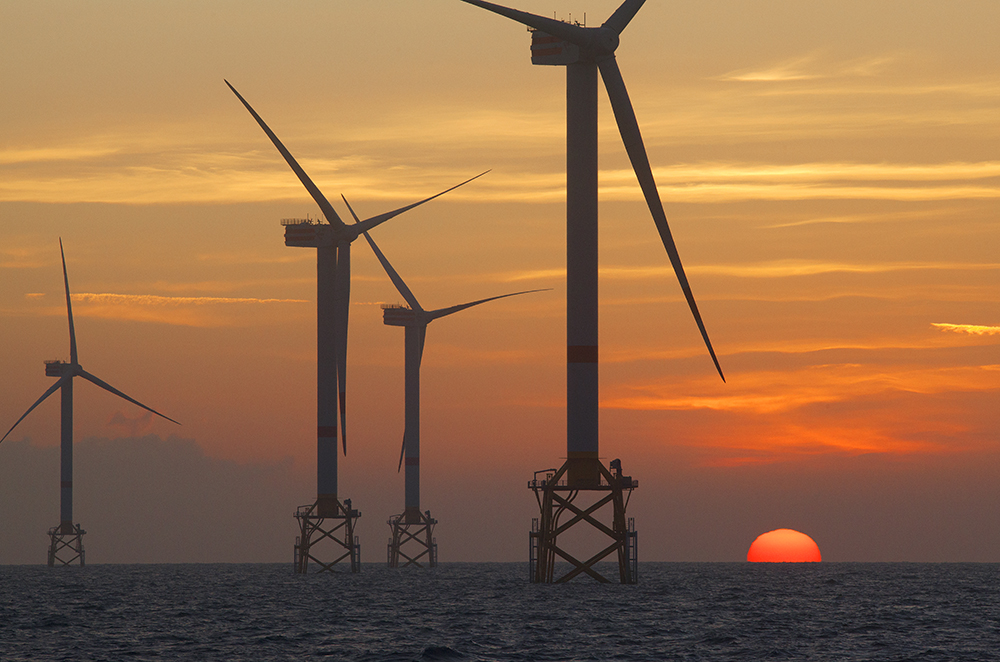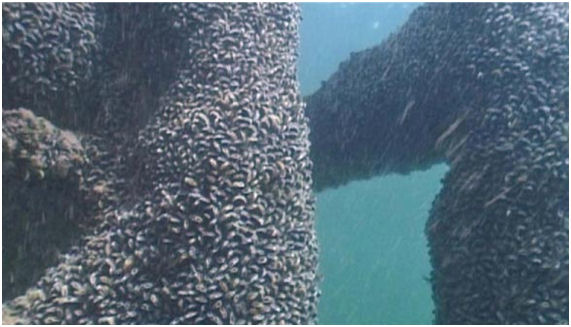





 Artificial reefs.
Artificial reefs. Habitat enhancement.
Habitat enhancement. Jens Christensen. Common mussel on turbine structures at Horns Rev. Danish Offshore Wind - Key Environmental Issues.
Jens Christensen. Common mussel on turbine structures at Horns Rev. Danish Offshore Wind - Key Environmental Issues.Jacket foundations and partly tripod foundations have a complex structure with sloping surfaces which are suitable for light dependent algae. This complexity of the structure attracts mobile fauna such as fish and crustaceans due to the presence of plenty of cavities to in which to settle.
However, the factors that primarily determine the species established around the foundation are salinity, level of exposure, depth, distance to land and light availability. These are more important than the design and the structure of the foundation
(Hammar et al, 2010).